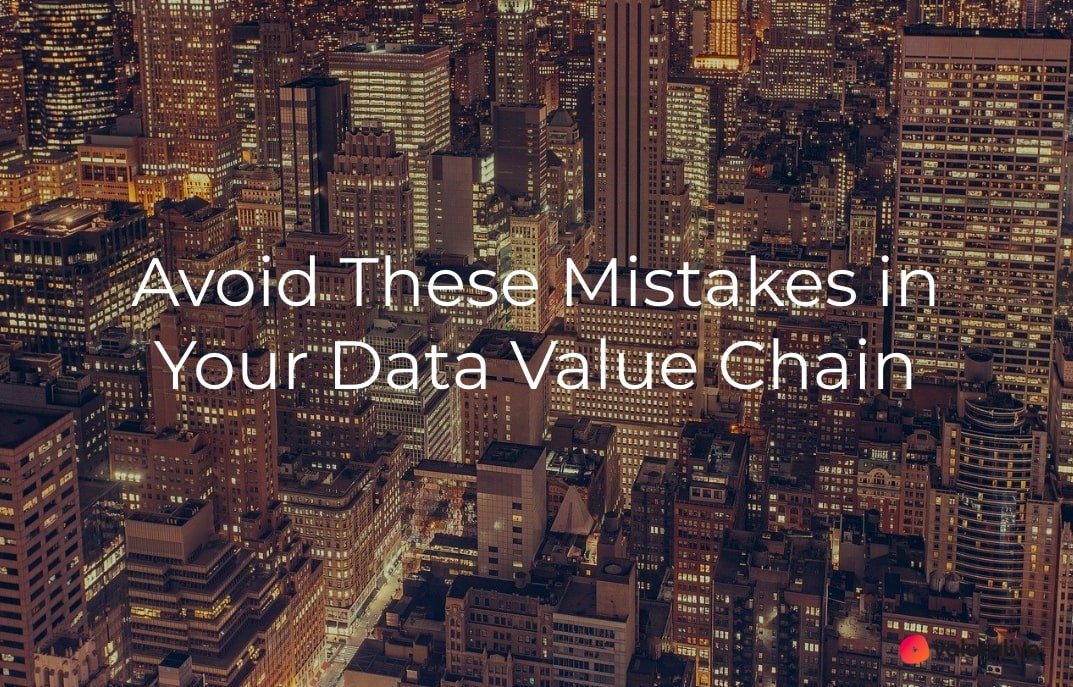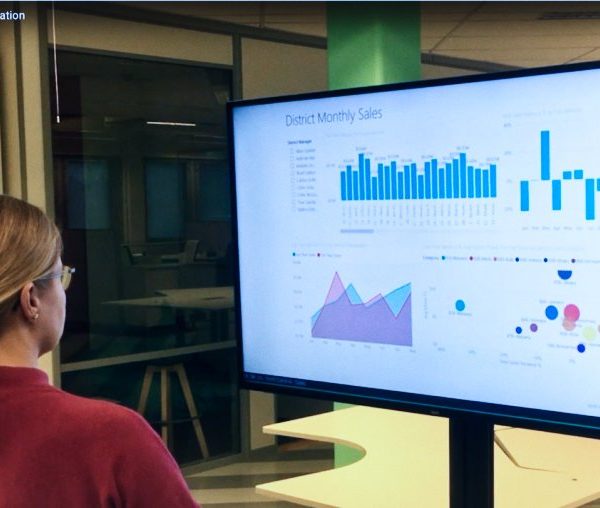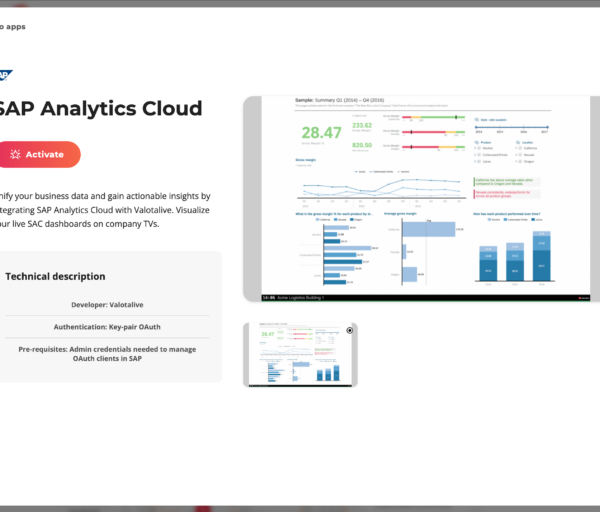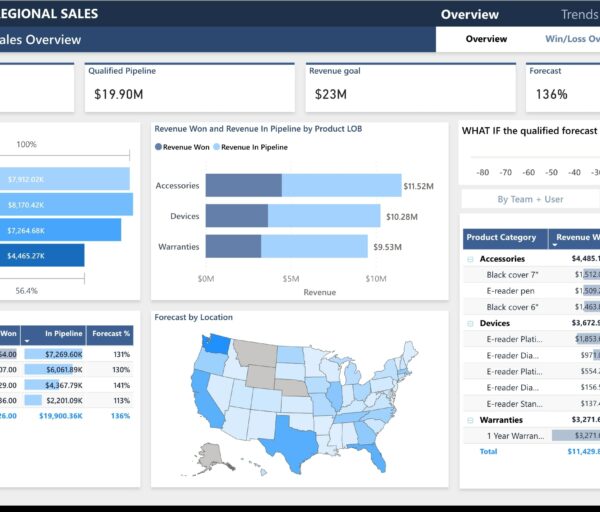By: Kaijus “Kuju” Asteljoki
Last Saturday I got a phone call from my friend Ville: “I’m in the neighborhood, do you have coffee if I come over for a visit?”
“Sure!” I said.
We started talking about the usual, family, hobbies, and such, but as you guessed, we ended up talking about work.
Soon enough we had a piece of blank paper on my kitchen table and were drawing diagrams on it while talking about data and data management in business processes.
A coffee break well spent!
This discussion eventually inspired me to write to you about how crucial it is today for businesses to succeed in setting up their data value chain and avoid both vertical and horizontal silos.
According to a study by Accenture (August 2019) a small group of data-driven champions are also high-growth companies. They have grown their revenues and profits above the industry average during the past years.
What is holding other companies back?
There are, sometimes unseen, silos in the data value chain that can prevent companies to make the most out of this valuable asset we call data and becoming data-driven.
Massive amounts of data is being produced every day, but all that information does not provide any value unless you are able to make relevant insights out of it and deliver those insights to all stakeholders when they need it.
What is the data value chain?
Traditional businesses set up a new data value chain to become a data-driven businesses. This means giving all internal stakeholders a clear data and insights-based view of the business.
The true value of data lies in the insights-based decisions and actions that maximize the benefit of the organization.
“When your capture, curate and consume process begins to tick like clockwork, data empowers you to build new offerings and disruptive business models (think Uber, Airbnb, Netflix, Alibaba…).” – SANJEEV VOHRA, Global Lead – Technology Officer and Data Business Group, Accenture Technology
The data value chain means the value is added step by step on the data during the data lifecycle.
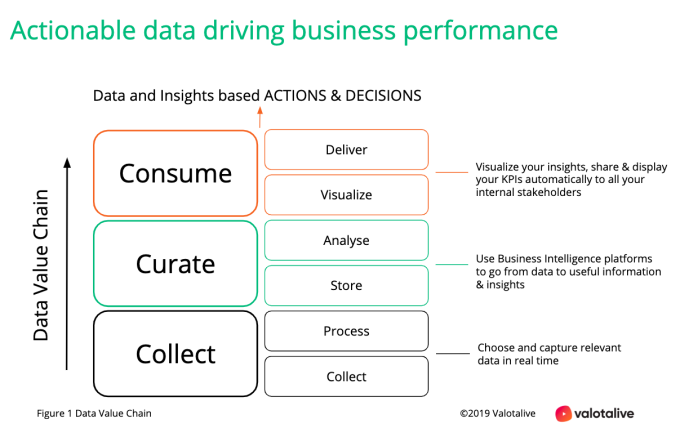
The three Cs in the new data value chain are:
Collect
Collect data in various formats with an increasing speed
Curate
Perform analysis to provide actionable insights based on that data
Consume
Deliver these insights to the right employees around your organization when they need it. As an example, companies use data-based insights to boost productivity, increase production rates, predict customer behavior, or predict equipment failure to decrease unexpected costs.
Avoid Silos in your data value chain
A failure to approach the data value chain in a holistic way can slow down the process of becoming a data-driven business. This can mean a failure to reach an increase in organizational productivity and profitability.
You are only as good as your weakest link in the chain. There can be both vertical and horizontal silos in the data value chain.
Avoid these mistakes
Horizontal Silo
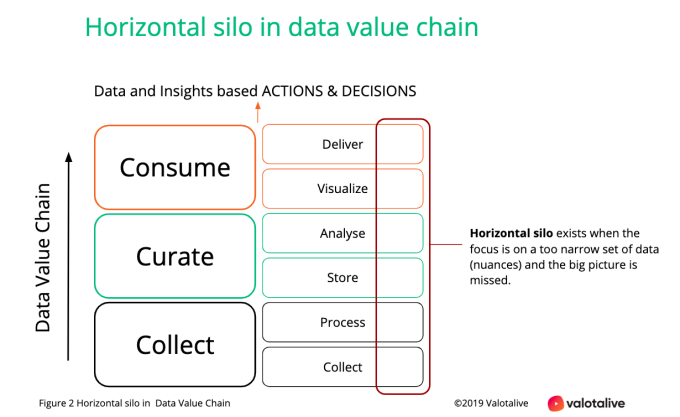
Horizontal silo exists when the focus is on a too narrow set of data (nuances) and the big picture is missed.
Vertical Silo
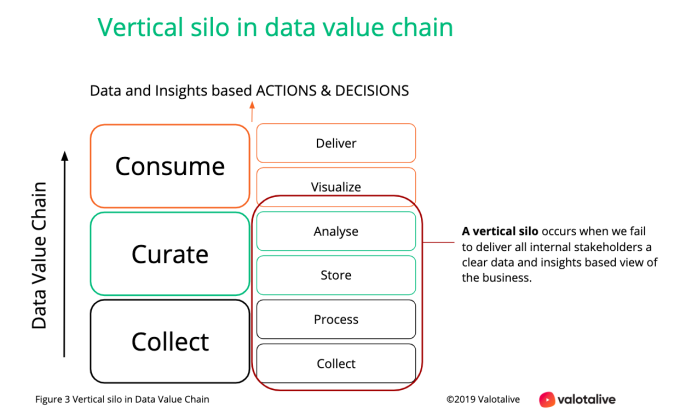
A vertical silo exists when we fail to deliver all internal stakeholders a clear data and insights-based view of the business.
This is a big mistake.
Why?
Businesses have increasingly invested in database services, storage platforms, data analysts, and business intelligence systems with machine learning or AI capabilities in use, but often fail to share their insights with their employees.
The reports and insights tend to be available for a handful of people.You are only as good as your weakest link in the chain.
So how to improve?
Communicating Data and Insights
Business Analysts and Team Leaders today turn to communication teams to make sure they are able to deliver insights to all internal stakeholders from front-line workers to C-level. They want to make most of their data transparent and share it with the team, throughout the organization.
Increase your odds – share your data;
Smart companies align their organization with visual real-time information. They are using various communication channels from live reports in social intranets to visual dashboards on Workplace Digital Signage to make sure there are no weak links in the Consume part of the Data Value Chain.
If you are not familiar with the term Workplace Digital Signage your read more in this blog.
As an example, the integration of Power BI reports into digital signage solutions is transforming how businesses visualize and share data.
Case Rexel
Rexel, with headquarters in Paris, France is an expert in multichannel distribution for the energy world. The company has been listed on the Paris Stock Exchange.
Rexel is using Valotalive Workplace Digital Signage to improve quality and employee communication.
Thomas Grüner, Project Manager, Logistics at Rexel says “Rexel is using Valotalive digital signage software to Improve quality and employee communication in their distribution center in Germany.
We found the service very easy to use and are benefiting from the integrations with Microsoft applications, such as Power BI as an example.”
